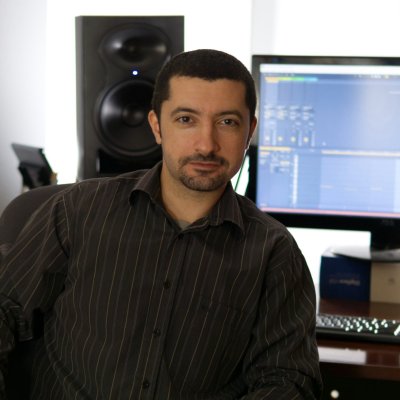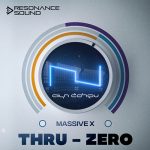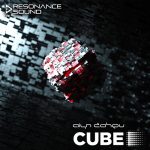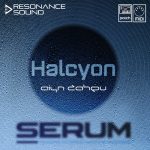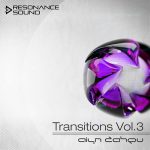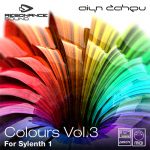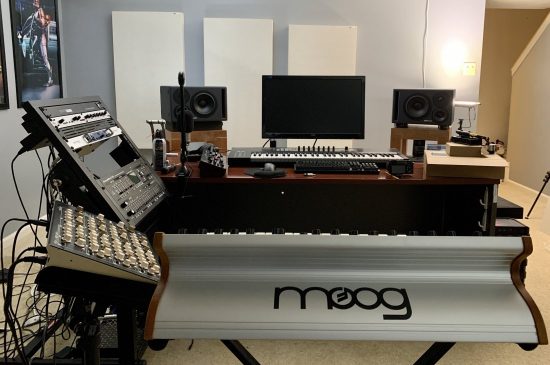ALL ABOUT AIYN ZAHEV SOUNDS

Sami Rabia began programming synthesizers over a decade ago, in 2012 he launched his first commercial sound banks under the moniker Aiyn Zahev Sounds starting with the release of Serenity for Ultra Analog. It was well-received by professionals and enthusiasts alike, and he went on to produce packs for some other popular synths, including DUNE and Sylenth. Not long after this, he began working with developers such as Tone2 and Xils-Lab, and in August 2012 he teamed up with Resonance-sound.
Sami spends hours tweaking patches, his goals have always been simple: beautiful sounds. Sometimes that means beefy basses, sometimes it means lush pads and serene plucks, sometimes it means complex evolving ambient patches, but he has always looked for those special “uplifting moments” sounds in synths. View all Aiyn Zahev Sound Products
What Artists and Press say about the products:
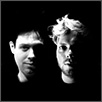
Nice presets, very usable. Intended for trance but usable for a lot of different genre breakdowns. Thumbs up from me!
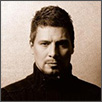
Fresh and inspiring soundset, really adds to the existing lush presets, modern and powerful! the sounds can go into productions immediately.
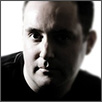
Just have to say a massive thanks to Aiyn Zahev Sounds for the excellent Diva ‘Transitions’ bank. 3 patches and counting in my current tune.
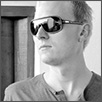
I’m always excited to try out new presets by Aiyn Zahev Sounds, and this one didn’t let me down either! A great collection of well-sounding basses, leads & more.
Q & A with Sami Rabia
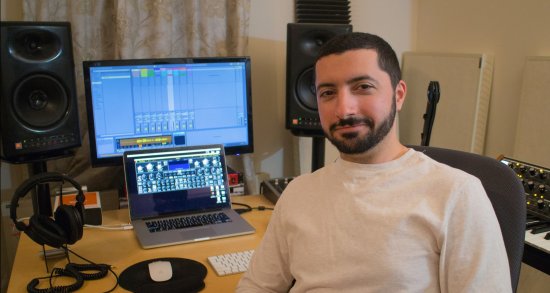
Q: HOW DID YOU GET INTO MUSIC?
SAMI RABIA: I enjoyed a variety of music as a kid thanks to my Mums diverse interests, but the first time I was really taken away with a sound was the first time I heard trance music. It wasn’t just something that sounded nice to me, it actually seemed to gel with my personality in a way that nothing else did. Where I lived nobody cared about electronic music so it was rare to hear it. But as I got older I was able to get a hold of the first Trance Nation CD and a few others like the Euphoria series. Another source of influence was Wipeout 3, a futuristic racing game for the playstation (the first playstation!). Psygnosis hired Sasha to be their musical director. (Talk about ahead of the curve).
Subsequently It had an amazing soundtrack, and the stand out for me was of course Xpander, which still gives me goosebumps. Pure Euphoria (mixed by Matt Darey) came along nd became my all-time favourite trance compilation. All of this interest caused me to explore making music myself. I was about twelve years old when I started making my own music on computer software and I graduated to more and more complex software over time. I always dreamed of getting some hardware, but I was too young to afford it, I just got lucky that the software revolution was taking place at just that time. The biggest breakthrough was when I learned how to use Reason (2.5). In time my tastes spread to more electronic styles.
Q: HOW DID AIYN ZAHEV SOUNDS START?
SAMI RABIA: Aiyn Zahev Sounds came about because kind people encouraged me to start it. I had entered a contest online and produced a trance track. I didn’t win but I received a lot of comments about my sound design. At the same time the project had highlighted how much I needed a decent PC to progress any further, which I simply could not afford at the time.
So I had the idea to make a soundbank, charge a modest fee and to tackle this problem by dedicating myself to learn how to really use a synth and worked obsessively with Ultra Analog VA-1 for months until I finally came out with Serenity. This was very well received, and so on with D.U.N.E & then Diva. By that time requests were flooding in for more. Developing my abilities like this was really challenging and rewarding at the same time since I seem to work best when I have a clear conscice goal. It was also raising my music production levels as I worked on synth demos, so I felt encouraged and even obliged to continue this work and Aiyn Zahev Sounds quite quickly became an important part of who I am.
Q: WITH SO MUCH COMPETITION, WHATS MAKES YOU STAND OUT?
SAMI RABIA: The field of sound design is huge. There are so many ways you can take a synth. I began with a simple overall design philosophy that I think worked: if it moves me, it will move others too.
As time has gone on and I have sampled more of the “competitions” soundbanks and I’ve found many of them to be of impressive quality overall but they are still quite different from my own so I no longer consider them direct competition. Others tend to offer recreations of sound in a genre, which I do too, but my motive has always been to expand users palette beyond the standard sounds. This is because I am not a lover of generic sounding dance music, I crave creative and unusual sounds in the music I listen to, and that is why I tend to produce a lot of those types of sounds in my dance banks.
Dance music is very broad in my mind and I don’t tend to follow trends exclusively. If I think a synth will do vangelis-esq types of sounds, I will do them, if they do gritty analog or rough digital sounds I’ll do those too. I try to run with what I think are a synths strongest abilities. The idea for me is that each synth is like an untapped well, if you continue to dig you will eventually get water.
The final result is not a “product” as such, it’s a snapshot of my own musical pallet, the sounds I create for myself and that I am convinced others will like too.
Q: WHAT IS YOUR SET-UP?
SAMI RABIA: While I like a number of DAWS my favourite is Cubase. I have always found it to work best for me despite it’s annoying quirks. I also run Studio One from time to time as it’s got some great strengths over cubase. I am using an Audient ID22 audio interface which has greatly helped my ability to hear what is going on, as have my PSI Audio 17-m Monitors.
Q: HOW DID YOU BECOME A PARTNER OF RESONANCE SOUND?
SAMI RABIA: Oliver Schmitt contacted me one day out of nowhere and we began talking. I had known about Sounds of Revolution for years before, I used to listen to his demos for various hardware synths back when I could only dream of owning one as I was just a kid. It was a big inspiration for my own music in fact. So of course I was pleased to team up and it’s done me a lot of good. I’ve had to step up my game and take things a little more seriously to keep up with their own products, mostly in terms of quality check (duplicates) before things get out the door and quality of the artwork. I think I’m getting there!
Q: WHAT HOURS SUIT YOUR WORK?
SAMI RABIA: I definitely have better success at night. I can sit for hours on end at a blank screen during the day and sometimes I just have to do that to get somewhere, but I’ve produced some of my favourite work quickly and quite naturally in the early hours of the morning. Something about the quietness and how my mind winds down helps me to think more outside the box.
Q: WHAT DRAWS YOU TO A SYNTH?
SAMI RABIA: Sound first and foremost. I love synths, I don’t care how many hours I’ve sat tweaking a filter, if it sounds good I’ll be back at it again the next chance I get.
The next thing is flexibility. It’s great having a good core sound but to really take it places you need a decent amount of routing and modulation options. Effects are also very important to me. I don’t view them as “add-ons” to a synth as often they can be a deeply integrated part of the sound itself so I view them as just another module of the synth, like a filter or oscillator.
The last thing is how popular it is. Sylenth1 was a bit intimidating for example as there have been so many thousands of presets produced for it already. I really only wanted to produce a bank for Sylenth1 if I felt I could somehow come up with something vibrant but different from what I had already heard people do with it. In the end I feel I did that with Colours Vol’s 1-3. The same was true for Massive and Safara Vol.1 & 2.
Q: WHAT OTHER SOFTWARE DO YOU USE?
SAMI RABIA: Well if the demo is dry then probably just a Pro-L limiter, but if I am trying to show the sounds in the context of a real world mix then I will use EQ, usually a hi-pass filter so the sounds can sit with a kick. For this I really like Digital V2 by brainworx. I also like the Glue from Cytomic a lot to enhance the groove of the drums or the whole track.
SSL plugins are great and so its Exponential Audio Phoenix. I try to keep all processing to a minimum these days. I always by-pass back and forth to make sure if I do add any processing like this to synth sounds that it is not altering the perceived character. It’s important that what you hear is what you get and it’s mostly a case of loudness difference and getting them to work with the drums (if needed).
Q: WHAT DO YOU DO WHEN YOU GET STUCK FOR GOOD IDEAS?
SAMI RABIA: It comes easy when I am in the right frame of mind, so when I am not I just leave it and do something else, spend time with kids, go out with my wife, watch a movie, read a book, whatever it might be until I have a clear view of what I want to do with the current project.
Sometimes the problem is I just don’t know the synth well enough yet. If I am producing good sounds but they are a little generic or boring then I go back to the drawing board. This means hours of fiddling around with the synth until it finally “speaks” to me. Until I find out what it “wants” to do and then it gets exciting for me again.
Q: WHAT ARE YOUR PLANS FOR THE FUTURE?
SAMI RABIA: Well, I definitely don’t want to stop making soundbanks. There are so many synths so and so little time. I will likely make banks for hardware synths too as I now have a Virus TI & Nord Lead 4. Everytime I think I have reached the limit of what I can do I discover a new approach and a new world of sounds. I would also like to produce samples packs one day. I am trying to find a balance though, I don’t want to produce generic sample packs that only work for one or two styles. I want to produce a library of sounds everyone can use in many tracks yet not sound like they used a bunch of samples. One area I find especially lacking today is sound quality, the samples so often sound harsh.
I also need to transfer my skills of sound design and demo making to produce some commercially available music, but as I said before I tend to dislike generic dance music. This often leads me to explore way too much and not actually complete anything, a terrible habit and one I must overcome.
Apart from all this I am really enjoying making tutorial videos which I upload to youtube. I definitely want to make more of those. I know how hard it can be learn the tools and get inspiration so I am only to happy to help in anyway I can!
Regards
Sami
Q: THANK YOU FOR TAKING YOUR TIME TO CHAT WITH US
